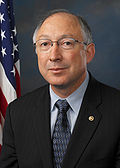| District | Representative | Switched party | Prior background | Birth year |
|---|
| California 3 | Daniel Lungren (R) | No | Former Congressman [h] | 1946 |
| California 20 | Jim Costa (D) | No | Family farmer | 1952 |
| Colorado 3 | John Salazar (D) | Yes | Soldier | 1953 |
| Florida 14 | Connie Mack IV (R) | No | State Representative | 1967 |
| Florida 20 | Debbie Wasserman Schultz (D) | No | State Representative State Senator | 1966 |
| Georgia 4 | Cynthia McKinney (D) | No | Former Congresswoman [i] | 1955 |
| Georgia 6 | Tom Price (R) | No | State Senator | 1954 |
| Georgia 8 | Lynn Westmoreland (R) | No | State Representative | 1950 |
| Georgia 12 | John Barrow (D) | Yes | Athens City Council, Athens County Commissioner | 1955 |
| Illinois 3 | Dan Lipinski (D) | No | Political assistant, college professor | 1966 |
| Illinois 8 | Melissa Bean (D) | Yes | Sales executive | 1962 |
| Indiana 9 | Mike Sodrel (R) | Yes | Guardsman, automotive executive | 1945 |
| Kentucky 4 | Geoff Davis (R) | Yes | Ranger, manufacturing consultant | 1958 |
| Louisiana 1 | Bobby Jindal (R) | No | Consultant | 1971 |
| Louisiana 3 | Charlie Melancon (D) | Yes | State Representative, Small business owner | 1947 |
| Louisiana 7 | Charles Boustany (R) | Yes | Surgeon | 1956 |
| Michigan 7 | Joe Schwarz (R) | No | Physician | 1937 |
| Missouri 3 | Russ Carnahan (D) | No | State Representative | 1958 |
| Missouri 5 | Emanuel Cleaver (D) | No | Mayor of Kansas City, Minister | 1944 |
| Nebraska 1 | Jeff Fortenberry (R) | No | Publishing executive, economist | 1960 |
| New York 27 | Brian Higgins (D) | Yes | Buffalo Common Councilman, State Representative, Political assistant | 1959 |
| New York 29 | Randy Kuhl (R) | No | State Representative, State Senator, attorney | 1943 |
| North Carolina 5 | Virginia Foxx (R) | No | State Senator, college professor/administrator | 1943 |
| North Carolina 10 | Patrick McHenry (R) | No | State Representative, realtor | 1975 |
| Oklahoma 2 | Dan Boren (D) | No | State Representative | 1973 |
| Pennsylvania 8 | Mike Fitzpatrick (R) | No | Member of the Bucks County Board of Commissioners, Attorney | 1963 |
| Pennsylvania 13 | Allyson Schwartz (D) | No | State Senator | 1948 |
| Pennsylvania 15 | Charlie Dent (R) | No | State Representative State Senator | 1960 |
| South Carolina 4 | Bob Inglis (R) | No | Former Congressman [j] , Attorney | 1959 |
| Texas 1 | Louie Gohmert (R) | Yes | Soldier | 1953 |
| Texas 2 | Ted Poe (R) | Yes | Prosecutor, judge Harris County, Airmen | 1948 |
| Texas 9 | Al Green (D) | No | Justice of the Peace Harris County, attorney | 1947 |
| Texas 10 | Michael McCaul (R) | Yes | Federal prosecutor | 1952 |
| Texas 11 | Mike Conaway (R) | Yes | Soldier | 1948 |
| Texas 24 | Kenny Marchant (R) | Yes | State Representative | 1951 |
| Texas 28 | Henry Cuellar (D) | No | State Representative, Secretary of State Texas, | 1955 |
| Virginia 2 | Thelma Drake (R) | No | State Representative, realtor | 1949 |
| Washington 5 | Cathy McMorris (R) | No | State Representative, orchardist | 1969 |
| Washington 8 | Dave Reichert (R) | No | Sheriff King County, Airmen | 1950 |
| Wisconsin 4 | Gwen Moore (D) | No | State Representative, State Senate, civic affairs specialist | 1951 |









